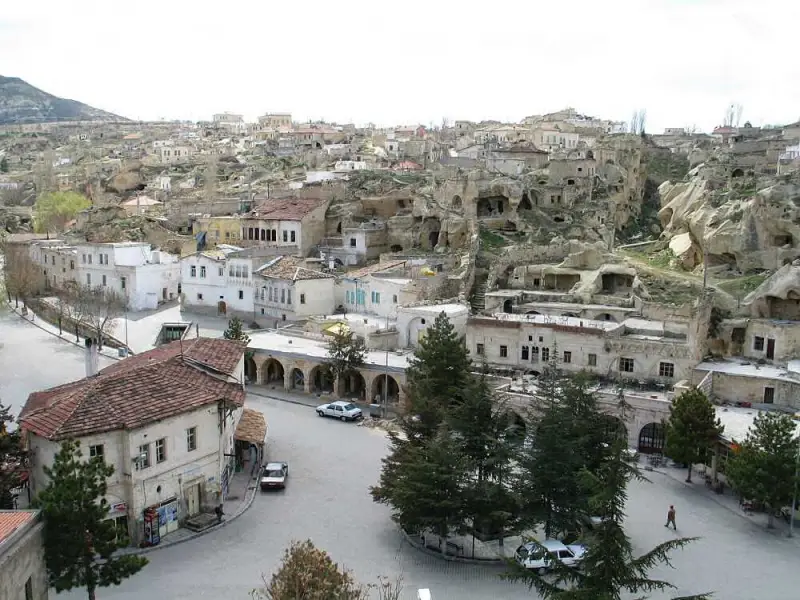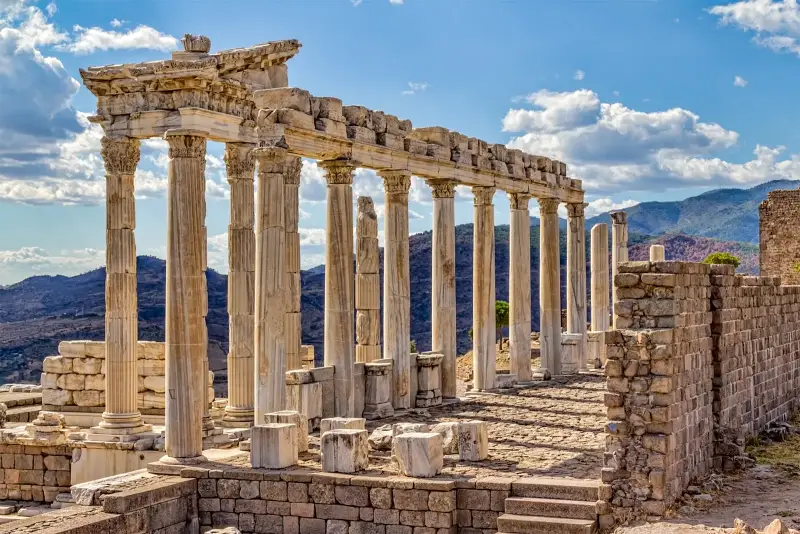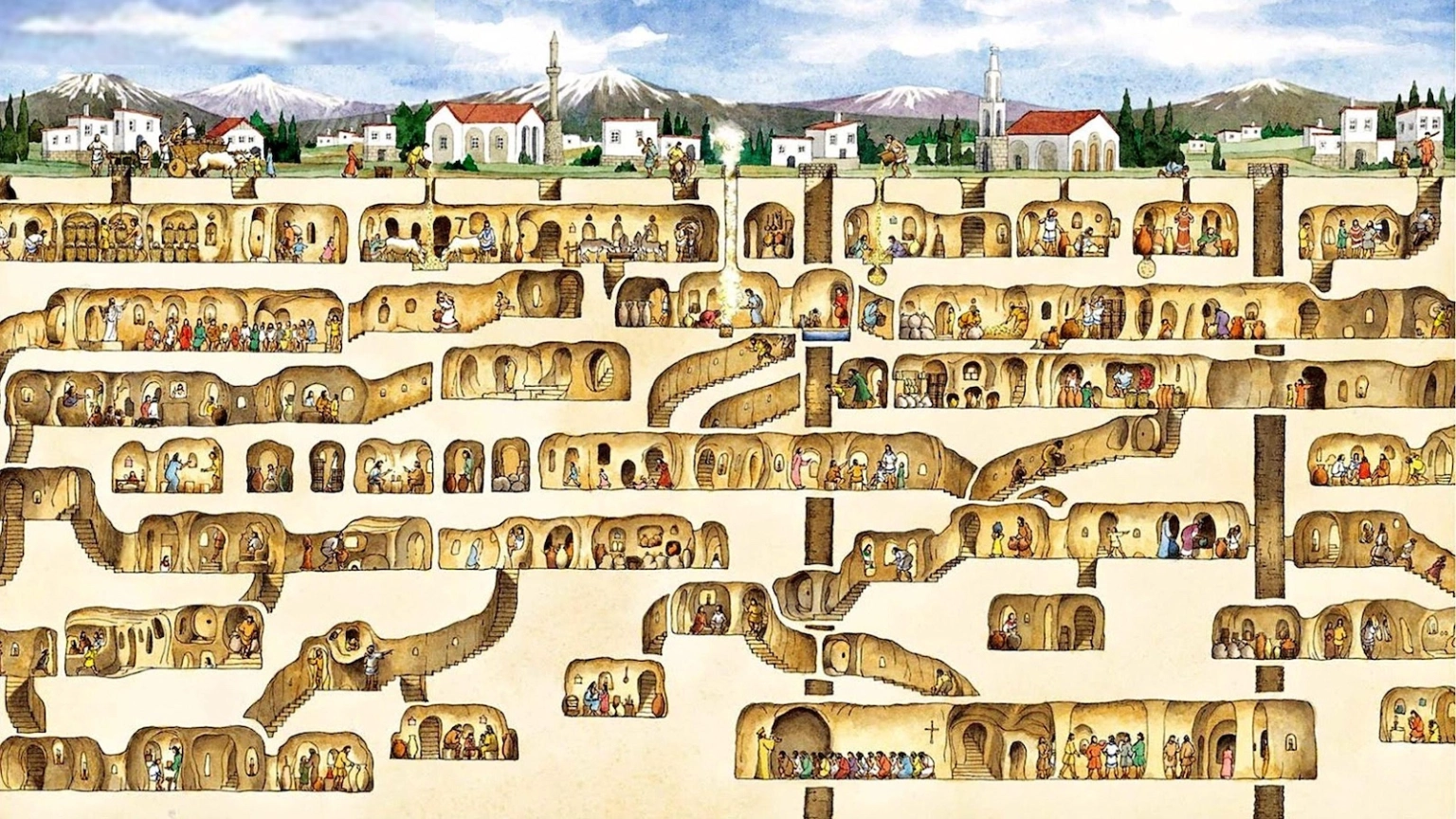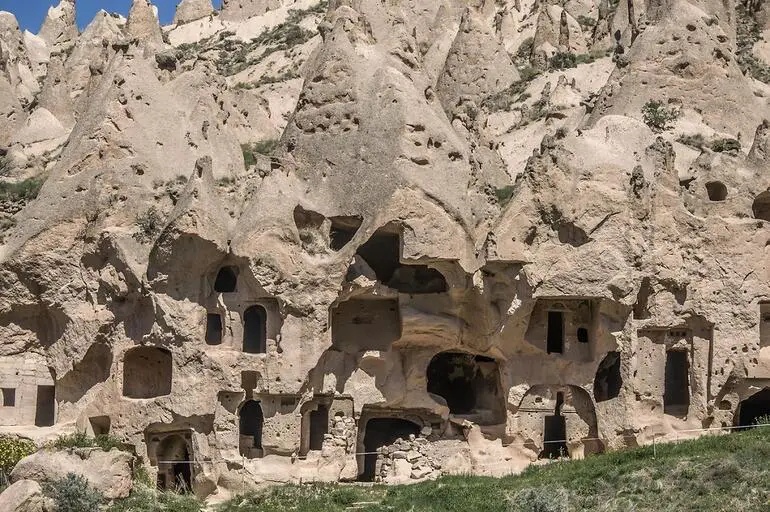Ihlara Valley Cappadocia
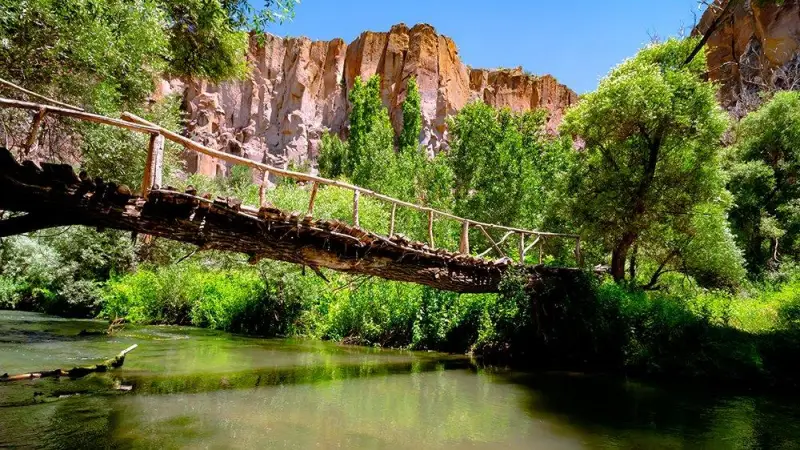
Ihlara Valley
Who doesn’t want to travel in time? If you are one of those who are curious about time traveling, then Ihlara Valley Cappadocia is the right place for you! The 14-kilometer-long valley has always been an important religious center since the early days of Christianity. It sheds light on the numerous churches and historical living spaces. The frescoed churches formed by the geological features of the region. people carved them into the rocks just like the spirit of the monastery.
You can still visit the architecture while wandering inside the amazing structures. 14 of these churches are open for visit. These are Agacaltı, Sumbullu, Yilanli, Kokar, Prenliseki, Egritas, Direkli, Saint Georgeus, Karagedik, Ala, Bezirhane, Bahattin Samanligi and Batkin Churches. If you want to see pictures, they takes place at the bottom of this page.
You should be ready before starting your valley walk for 382 step ladder. It may take up to four hours depending on your pace. You should take your time while traveling through the old times. However, you don’t need to worry about time because resting spots on the Melendiz Stream allow you to take breaks and rinse your journey down with a cup of tea.
The Churches in the Ihlara Valley
Ağaçaltı Church

The Ağaçaltı Church, also known as the Daniel Pantonassa Church, is a significant historical and religious site located in the stunning Ihlara Valley in Aksaray Province, central Turkey. The Ihlara Valley, renowned for its unique natural beauty and historical significance, is a deep gorge carved by the Melendiz River and is home to numerous rock-cut churches and dwellings.
The Ağaçaltı Church dates back to the early Byzantine period, approximately between the 9th and 11th centuries. This rock-cut church is distinguished by its architectural design and remarkable frescoes that adorn its interior. The church’s name, Ağaçaltı, translates to “Under the Tree,” which is derived from its location near the valley’s entrance under the shade of trees, creating a serene and picturesque setting.
One of the most notable features of the Ağaçaltı Church is its well-preserved frescoes, which provide a vivid depiction of biblical scenes and figures. Among the most prominent frescoes is the depiction of the Ascension of Jesus, surrounded by apostles and angels, which is located on the church’s dome. Other significant frescoes include scenes from the life of Christ, such as the Nativity, the Baptism, the Crucifixion, and the Dormition of the Virgin Mary. These frescoes are characterized by their vibrant colors and expressive figures, offering a glimpse into the artistic and religious culture of the Byzantine period.
The church’s architectural layout includes a single nave with a barrel-vaulted ceiling and a small apse. The simplicity of the structure highlights the focus on the frescoes and their religious significance. Over the centuries, the Ağaçaltı Church has withstood natural and human-induced challenges, allowing it to remain a vital part of the region’s cultural heritage.
Visitors to the Ihlara Valley often explore the Ağaçaltı Church as part of their journey through this remarkable canyon. The church not only provides insight into the religious history of the region but also offers a tranquil and reflective space amid the natural beauty of the valley.
Sümbüllü Church
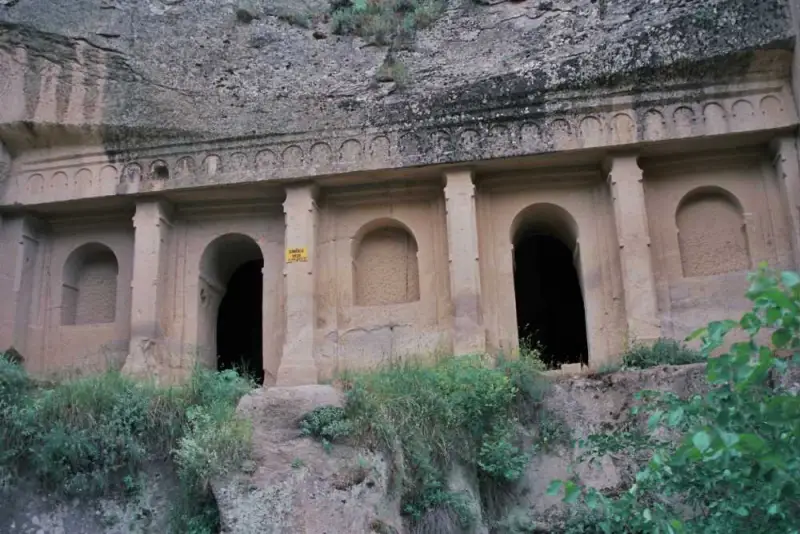
The Sümbüllü Church is one of the many historically significant rock-cut churches nestled in the enchanting Ihlara Valley in Aksaray Province, central Turkey. The Ihlara Valley, formed by the Melendiz River, is a deep and picturesque gorge renowned for its natural beauty and a concentration of Byzantine-era rock-hewn churches, monasteries, and dwellings.
The Sümbüllü Church, also known as the Hyacinth Church, dates back to the Byzantine period, approximately between the 9th and 11th centuries. The church is named after the hyacinths that bloom around the area, adding to its serene and scenic ambiance. Like many churches in the Ihlara Valley, the Sümbüllü Church was carved directly into the soft volcanic rock, making it an integral part of the landscape.
Architecturally, the Sümbüllü Church features a single nave with a barrel-vaulted ceiling, typical of the rock-cut churches in the region. The simplicity of the church’s layout allows for a focused appreciation of its frescoes, which are the primary highlight. These frescoes, although weathered over time, still exhibit significant artistic value and provide a glimpse into the religious and cultural practices of the Byzantine period.
The interior walls of the Sümbüllü Church are adorned with vivid frescoes depicting various biblical scenes and figures. One of the most prominent frescoes is that of Christ Pantocrator, a common motif in Byzantine art, symbolizing Christ as the Almighty. Other notable frescoes include scenes from the life of Jesus, the Virgin Mary, and various saints. The frescoes are characterized by their detailed and expressive figures, although many have faded or been damaged over the centuries.
The church’s location within the Ihlara Valley adds to its allure. The valley itself is a haven for hikers and history enthusiasts who traverse its scenic trails to discover the numerous churches and monastic sites hidden within its cliffs. The serene environment, combined with the historical significance of sites like the Sümbüllü Church, offers visitors a unique opportunity to explore the intersection of natural beauty and ancient history.
Despite the passage of time and the impact of natural elements, the Sümbüllü Church remains an important part of the Ihlara Valley’s cultural heritage. Its frescoes, architecture, and tranquil setting continue to draw visitors who seek to connect with the spiritual and historical legacy of the Byzantine era in this remarkable region.
Yılanlı Church

The Sümbüllü Church is one of the many historically significant rock-cut churches nestled in the enchanting Ihlara Valley in Aksaray Province, central Turkey. The Ihlara Valley, formed by the Melendiz River, is a deep and picturesque gorge renowned for its natural beauty and a concentration of Byzantine-era rock-hewn churches, monasteries, and dwellings.
The Sümbüllü Church, also known as the Hyacinth Church, dates back to the Byzantine period, approximately between the 9th and 11th centuries. The church is named after the hyacinths that bloom around the area, adding to its serene and scenic ambiance. Like many churches in the Ihlara Valley, the Sümbüllü Church was carved directly into the soft volcanic rock, making it an integral part of the landscape.
Architecturally, the Sümbüllü Church features a single nave with a barrel-vaulted ceiling, typical of the rock-cut churches in the region. The simplicity of the church’s layout allows for a focused appreciation of its frescoes, which are the primary highlight. These frescoes, although weathered over time, still exhibit significant artistic value and provide a glimpse into the religious and cultural practices of the Byzantine period.
The interior walls of the Sümbüllü Church are adorned with vivid frescoes depicting various biblical scenes and figures. One of the most prominent frescoes is that of Christ Pantocrator, a common motif in Byzantine art, symbolizing Christ as the Almighty. Other notable frescoes include scenes from the life of Jesus, the Virgin Mary, and various saints. The frescoes are characterized by their detailed and expressive figures, although many have faded or been damaged over the centuries.
The church’s location within the Ihlara Valley adds to its allure. The valley itself is a haven for hikers and history enthusiasts who traverse its scenic trails to discover the numerous churches and monastic sites hidden within its cliffs. The serene environment, combined with the historical significance of sites like the Sümbüllü Church, offers visitors a unique opportunity to explore the intersection of natural beauty and ancient history.
Despite the passage of time and the impact of natural elements, the Sümbüllü Church remains an important part of the Ihlara Valley’s cultural heritage. Its frescoes, architecture, and tranquil setting continue to draw visitors who seek to connect with the spiritual and historical legacy of the Byzantine era in this remarkable region.
Kokar Church

Kokar Church, nestled in the Ihlara Valley of Aksaray Province, central Turkey, dates back to the 9th to 11th centuries. This Byzantine-era rock-cut church features a simple yet functional design with a central nave, barrel-vaulted ceilings, and side aisles forming a cruciform layout. The church is renowned for its vibrant and detailed frescoes that depict key biblical scenes such as the Last Supper, the Crucifixion, and the Ascension, as well as various saints and prophets. These frescoes offer valuable insights into Byzantine religious art and iconography. Kokar Church served as a place of worship and refuge for early Christian monks and settlers, reflecting the monastic life that flourished in the Ihlara Valley. Visitors today can appreciate both the historical significance of the church and the natural beauty of the surrounding valley, making it a unique and serene destination.
Egritas Church
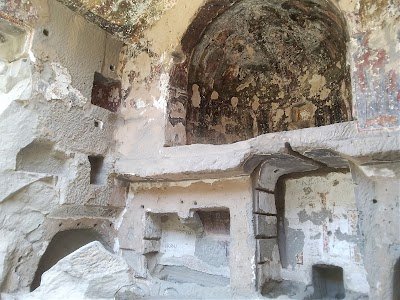
Eğritaş Church, located in the Ihlara Valley of Aksaray Province in central Turkey, is a notable example of Byzantine rock-cut architecture. Dating back to the 9th to 11th centuries, this church is carved into the soft volcanic rock characteristic of the region. It features a simple cruciform layout with a central nave and barrel-vaulted ceilings. The interior walls are adorned with frescoes, though many have faded over time. These frescoes depict various biblical scenes and saints, reflecting the religious artistry of the Byzantine period. Eğritaş Church served as a place of worship and refuge for the monastic communities that once thrived in the Ihlara Valley. Today, it stands as a testament to the spiritual and cultural history of the area. Visitors can explore the church and enjoy the serene beauty of the valley, offering a unique glimpse into the past.
Direkli Church

Direkli Church, located in the Ihlara Valley of Aksaray Province in central Turkey, is an impressive example of Byzantine rock-cut architecture from the 9th to 11th centuries. Carved directly into the volcanic rock, this church features a distinctive architectural layout with a central nave supported by pillars, giving it the name “Direkli,” which means “with columns” in Turkish. The interior walls are adorned with frescoes depicting various biblical scenes, saints, and religious motifs, showcasing the artistry and religious devotion of the period. Though many frescoes have faded over time, they still offer valuable insights into Byzantine iconography. Direkli Church served as a spiritual and communal hub for the monastic communities that once thrived in the Ihlara Valley. Today, visitors can explore this historical site and appreciate both its architectural significance and the natural beauty of the surrounding valley, making it a fascinating destination for history enthusiasts and travelers alike.
St. Georgeus Church

St. Georgeus Church, situated in the Ihlara Valley of Aksaray Province, central Turkey, is a remarkable example of Byzantine rock-cut architecture from the 9th to 11th centuries. This church is dedicated to St. George, a revered Christian martyr and saint. The church is carved into the volcanic rock of the valley, featuring a simple yet elegant design with a central nave and barrel-vaulted ceilings. The interior is adorned with vivid frescoes depicting scenes from the life of St. George, biblical events, and various saints. These frescoes, despite some fading over time, remain a testament to the religious artistry of the Byzantine period. St. Georgeus Church served as a place of worship and community gathering for the early Christian inhabitants of the valley. Today, it stands as a significant historical and cultural site, attracting visitors who appreciate its architectural beauty and the serene natural surroundings of the Ihlara Valley.
Karagedik Church
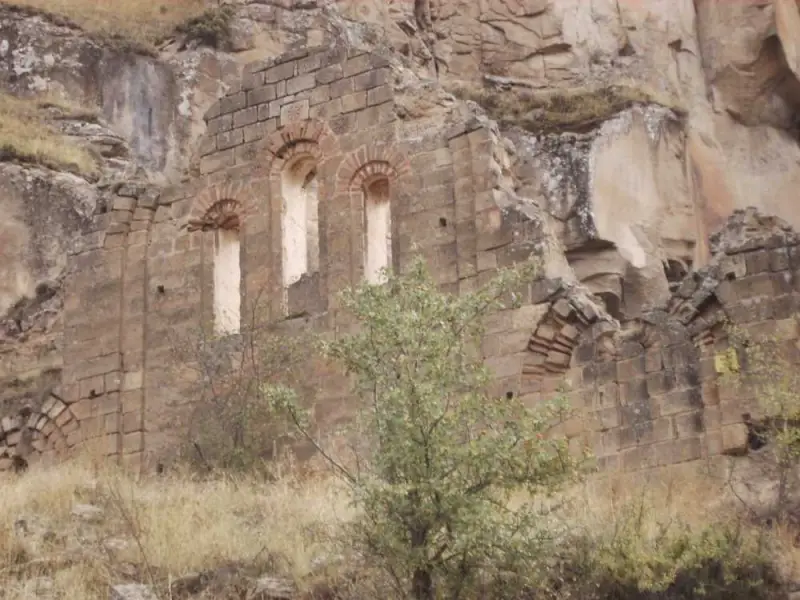
Karagedik Church, located in the Ihlara Valley of Aksaray Province in central Turkey, is a noteworthy example of Byzantine rock-cut architecture from the 9th to 11th centuries. This church, like many others in the valley, is hewn directly into the volcanic rock, reflecting the ingenuity and spiritual devotion of the early Christian communities that inhabited the region. The name “Karagedik” translates to “Black Crag,” likely referring to its dark, rugged setting.
The church features a single nave with a barrel-vaulted ceiling and an apse. The interior walls are adorned with frescoes, though many have faded or been damaged over time. These frescoes depict various biblical scenes and figures, providing valuable insights into the religious art and iconography of the Byzantine era. Scenes from the life of Christ, depictions of saints, and other religious motifs are common themes found within the church.
Karagedik Church served as a place of worship and refuge for monks and the local Christian population. It was part of a broader network of monastic sites within the Ihlara Valley, which was a significant center of early Christian monasticism. The serene and remote setting of the valley made it an ideal location for religious contemplation and community life.
Today, visitors to Karagedik Church can appreciate both its historical significance and the natural beauty of the surrounding landscape. The Ihlara Valley, with its lush vegetation and dramatic rock formations, provides a stunning backdrop for exploring this ancient site. The church stands as a testament to the enduring legacy of Byzantine religious architecture and the spiritual heritage of the region.
Ala ( Alahan) Monastery

The Ala (Alahan) Monastery, located in the Taurus Mountains of southern Turkey, near the town of Mut in Mersin Province, is a remarkable example of early Christian monastic architecture. This Byzantine monastery, dating back to the 5th century, is perched on a steep hillside, offering breathtaking views of the surrounding landscape.
Alahan Monastery is renowned for its impressive architectural features and well-preserved structures. The complex includes several key buildings, such as the East Church, the West Church, a baptistery, living quarters, and a colonnaded walkway. The East Church is particularly notable for its intricate stone carvings and detailed frescoes, which depict various biblical scenes and figures. These artistic elements highlight the high level of craftsmanship and religious devotion of the early Christian monks who inhabited the site.
The monastery was strategically located along the ancient road connecting Cilicia with Cappadocia, making it an important center for religious and cultural exchange. The site’s remote and elevated position provided both security and a tranquil environment for monastic life, which focused on prayer, contemplation, and community living.
One of the unique aspects of Alahan Monastery is its combination of natural and architectural beauty. The buildings are harmoniously integrated into the rugged landscape, creating a serene and inspiring setting. The colonnaded walkway, with its grand arches and panoramic views, is a testament to the architectural ingenuity of the period.
Bezirhane Church

Bezirhane Church, located in the Ihlara Valley of Aksaray Province, central Turkey, is one of the many rock-cut churches that date back to the Byzantine era, approximately between the 9th and 11th centuries. The Ihlara Valley, carved by the Melendiz River, is famous for its natural beauty and concentration of ancient churches and monastic sites carved into its soft volcanic rock.
Bezirhane Church, like other churches in the valley, features a simple yet functional design. It typically includes a central nave with a barrel-vaulted ceiling and an apse. The interior walls are decorated with frescoes, although many have faded over time due to natural wear and human activity. These frescoes often depict biblical scenes, saints, and other religious motifs, providing insights into the religious practices and artistic expressions of the period.
One of the unique aspects of Bezirhane Church is its name, which translates to “Linseed Oil House.” This suggests that the site may have also been used for the production of linseed oil at some point in its history, indicating a dual purpose of both religious and practical activities. This multifunctional use reflects the adaptability and resourcefulness of the early Christian communities in the region.
The church’s location within the picturesque Ihlara Valley adds to its allure. The valley’s lush vegetation, towering cliffs, and the serene flow of the Melendiz River create a tranquil environment that enhances the spiritual ambiance of the site. Visitors to Bezirhane Church can not only explore the historical and religious significance of the church but also enjoy the natural beauty that surrounds it.
Bahattin Samanlığı
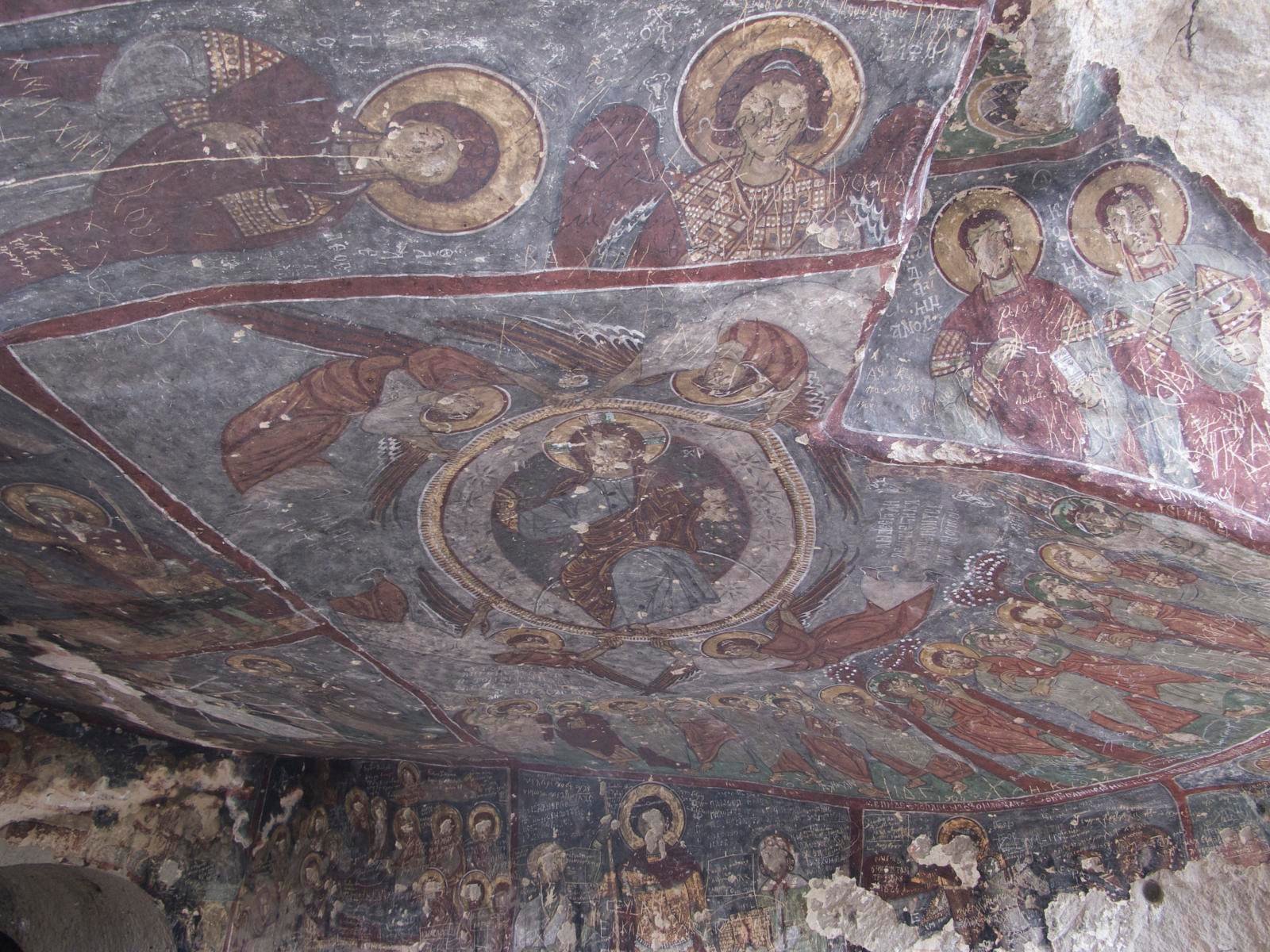
Bahattin Samanlığı, located in the picturesque Ihlara Valley of Aksaray Province in central Turkey, is one of the numerous rock-cut churches that showcase the rich Byzantine heritage of the region. The Ihlara Valley, formed by the Melendiz River, is a unique and scenic canyon known for its historical significance and concentration of ancient religious sites.
Bahattin Samanlığı, which translates to “Bahattin’s Barn,” is a rock-hewn church dating back to the 9th to 11th centuries. Like other churches in the valley, it was carved directly into the volcanic rock, a testament to the ingenuity and dedication of the early Christian communities that inhabited the area. The church’s name suggests that it might have had a dual function or that its later use involved storage, reflecting the practical adaptation of these spaces over time.
The church features a typical Byzantine design with a single nave and a barrel-vaulted ceiling. The interior is adorned with frescoes that, despite the ravages of time, still exhibit significant artistic value. These frescoes depict various biblical scenes and figures, including Christ, the Virgin Mary, and numerous saints. The style and themes of the frescoes provide valuable insights into the religious art and iconography of the Byzantine period.
Bahattin Samanlığı served as a place of worship and refuge for the local Christian population, as well as for monks who sought a life of contemplation and prayer in the secluded environment of the Ihlara Valley. The valley’s remote and tranquil setting made it an ideal location for monastic life, fostering a spiritual atmosphere that is still palpable today.
Batkın Church
Batkın Church, located in the Ihlara Valley of Aksaray Province in central Turkey, is one of the numerous rock-cut churches that illustrate the rich Byzantine heritage of the region. The Ihlara Valley, carved by the Melendiz River, is renowned for its natural beauty and the significant concentration of ancient religious sites embedded within its volcanic rock formations.
Batkın Church, dating back to the 9th to 11th centuries, is an excellent example of the Byzantine architectural and artistic prowess. The church is hewn directly into the valley’s soft volcanic rock, reflecting the resourcefulness and dedication of the early Christian monastic communities that inhabited the area.
The architectural layout of Batkın Church typically includes a single nave with a barrel-vaulted ceiling and an apse, a common design feature among the rock-cut churches in the Ihlara Valley. The interior walls are adorned with frescoes that depict a variety of biblical scenes and religious figures. Although many of these frescoes have faded or been damaged over time, they still offer valuable insights into the religious art and iconography of the Byzantine period. Scenes from the life of Christ, depictions of the Virgin Mary, and various saints are common themes in these frescoes.
Batkın Church served as a place of worship and refuge for the local Christian population, providing a spiritual sanctuary in the secluded environment of the Ihlara Valley. The valley’s remote and tranquil setting made it an ideal location for monastic life, fostering an atmosphere of contemplation and prayer.

How to get to Ihlara Valley?
To get to the Ihlara Valley, located in Aksaray Province in central Turkey, you can follow these steps:
From Istanbul:
By Air:
Fly from Istanbul to Nevşehir or Kayseri airports. Both airports are relatively close to the Ihlara Valley.
From Nevşehir Airport (approximately 75 km away) or Kayseri Airport (approximately 130 km away), you can rent a car or take a shuttle service to reach the Ihlara Valley.
By Bus:
Take a long-distance bus from Istanbul to Aksaray. The bus journey takes approximately 10-12 hours.
From Aksaray, you can take a local bus or taxi to the Ihlara Valley, which is about 40 kilometers away.
From Cappadocia (Göreme, Ürgüp, Avanos):
By Car:
Rent a car and drive to the Ihlara Valley. The drive takes approximately 1.5 to 2 hours. The route is straightforward and well-signposted.
Follow the D765 and D300 highways south from Göreme or Ürgüp, passing through Derinkuyu and Güzelyurt. Here is the google maps link of Ihlara Valley.
By Tour:
Many tour operators in Cappadocia offer day trips to the Ihlara Valley. These tours often include transport, a guide, and visits to other attractions in the region, such as Derinkuyu Underground City and the Selime Monastery.
From Ankara:
By Car:
The drive from Ankara to the Ihlara Valley takes about 3.5 to 4 hours.
Take the E90 highway towards Aksaray, then follow signs to Güzelyurt and the Ihlara Valley.
By Bus:
Take a bus from Ankara to Aksaray, which takes about 4 to 5 hours.
From Aksaray, take a local bus or taxi to the Ihlara Valley.
Local Transport:
Once you reach the Ihlara Valley, you can park your car at designated parking areas and explore the valley on foot.
The main entrance to the valley is at the village of Ihlara, where you can find a staircase leading down into the gorge.
There are several entrances and exits along the valley, with paths and trails that allow you to explore the churches and scenic spots.
Tips:
Wear comfortable walking shoes, as exploring the valley involves a lot of walking and stair climbing.
Bring water and snacks, especially if you plan to hike the entire length of the valley.
Check local weather conditions before you go, as the trails can be challenging in wet or hot weather.
With its rich history, stunning scenery, and unique rock-cut churches, the Ihlara Valley is a must-visit destination in central Turkey.

